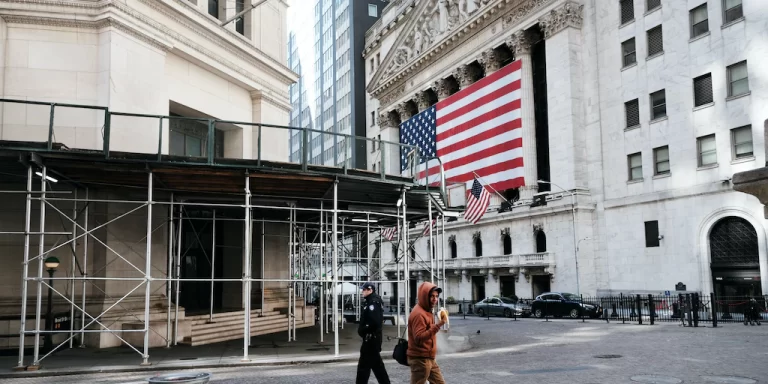Mark Yusko, the CEO and chief investment officer at Morgan Creek Capital Management, shared several reasons he thinks bitcoin’s price will hit $100,000 by the end of 2021.Yusko said it would be “perfectly logical” for bitcoin to hit $400,000 to $500,000 if its market capitalization moves toward that of gold.The call comes after the legendary investor Paul Tudor Jones’ recent disclosure that he’s built a stake of bitcoin futures, making him the latest investment mogul to buy the cryptocurrency.Click here for more BI Prime stories.
With the legendary investor Paul Tudor Jones disclosing purchases of bitcoin futures for the first time, it’s become increasingly clear that market denizens who were once skeptical about the cryptocurrency are revisiting their stance.But Mark Yusko, the CEO and chief investment officer at Morgan Creek Capital Management, where he oversees $2 billion, has been a bitcoin proponent for years now.In addition to being bullish on bitcoin, Yusko is bearish on the real estate market, stocks, and the US Dollar. What’s more, he calls bonds “pretty overvalued,” so he’s not keen on that space either.”Really what it comes down to is … I realized that this was technology — an innovation in technology, an innovation in computing power,” he said on the “Altcoin Buzz” podcast. “I actually believe that this transition will be the biggest wealth-creation opportunity I’ll probably see in my lifetime.”
The transition that Yusko speaks of is what he calls the move to “Web 3.0.” The way he sees it, Web 1.0 consisted of the initial internet moguls — Cisco, Microsoft, and Intel — and created tons of wealth. Web 2.0 companies grew even faster and bigger — firms like Alibaba and Facebook — because they were building on viable infrastructure already put in place.Today, Yusko says Web 3.0 — blockchain — will be “even bigger.” And it’s this network that is the key to making bitcoin valuable.And he has some extremely bullish forecasts for the cryptocurrency. He sees the fair value of bitcoin skyrocketing to $100,000 by the end of 2021. That would mark an about 900% increase from current levels.Outlined below are five of the main reasons Yusko gives for his unabashed bitcoin bullishness.
1. It’s a noncorrelated safe-haven asset “It acted exactly as all other safe-haven assets did,” Yusko said in reference to bitcoin’s behavior during the latest coronavirus-induced market swoon. “What people seem to miss is that uncorrelated doesn’t mean that you’re uncorrelated every day, every hour, every minute. It means you’re uncorrelated over the long term. And the correlation of bitcoin to other assets is very low — still about 0.15.”2. Fundamental growth”People take these short-term moves and try to extrapolate them into long-term trends — and they’re just not,” Yusko said. “They’re really unrelated events to the long-term fundamental part of bitcoin that is so attractive, which is more uses, more adoption, more widespread ownership, more wallets, more people with 0.1 or more bitcoin in their wallet.”
He added: “So all those things fundamentally are really, really strong.”3. The word is spreading and education is ramping up”But what you’ve got is this increasing knowledge base that’s being disseminated — groups like yours going on the air, people writing about it, people bringing it front and center,” he said.When Yusko first found out about bitcoin, he was skeptical. But as he learned more and became more educated in the space, he realized the opportunity at hand. He expects others to follow a similar path.
4. An endorsement from a younger generation”Bitcoin growth is determined differently. It’s a network, and networks grow based on usage, based on regulation, based on — in this case —millennial adoption because there’s really a difference between how older investors view the world, right? They think of gold as their safe haven. Younger investors think of bitcoin as their safe haven,” Yusko said.5. Fair value and scarcity”There will only be 21,000,000 ever mined, but some do get lost forever,” he said. “Fair value of this network — if you follow the stock-to-flow model or the original parabolic growth model — comes out to about $10,000 in 2017. Magically, we hit that about six days after we were supposed to.”
He added: “By 2021, about the mid to end of 2021, the fair value will be around $100,000.”With all of that established, it’s also worth noting that Yusko has an even more bullish forecast in a more far-flung scenario in which the total market value of bitcoin rivals that of gold. If that happens, he thinks bitcoin could hit $400,000 to $500,000. It’s a scenario he believes to be “perfectly logical.”



